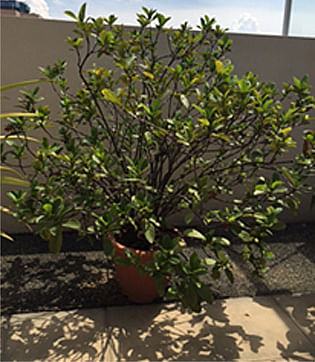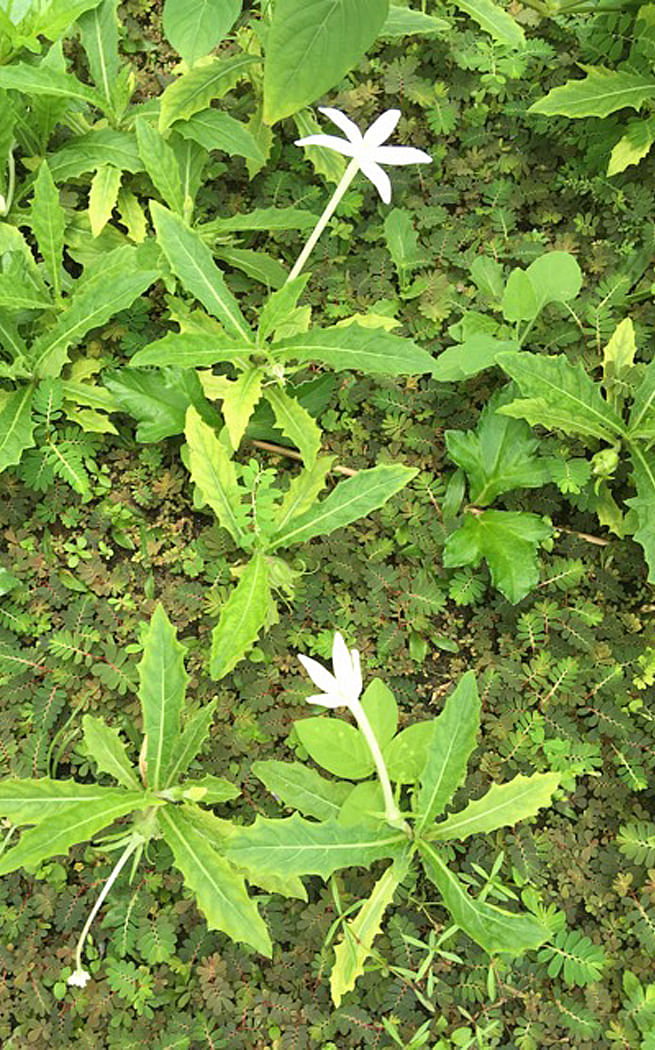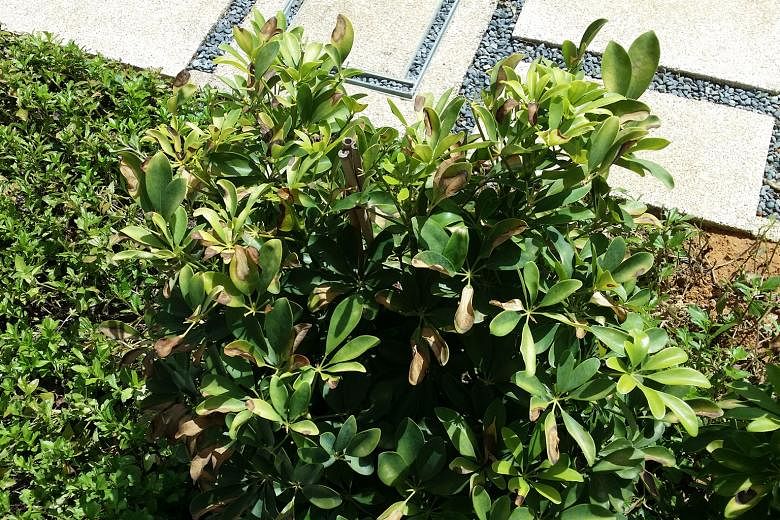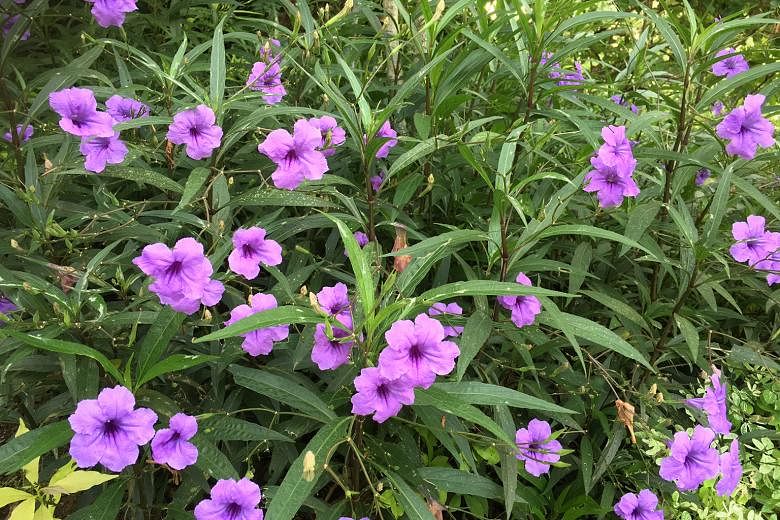Leaves of Dwarf Umbrella Tree sunburnt
Some of the leaves of my plant have turned brown under the hot sun. Recently, I transplanted it from a pot into the ground, but its condition has not improved. I bought it in January and watered it once a day in the morning for five months. Then I watered it twice a day. How can I save it?
Regina Taw
The plant is botanically known as Schefflera arboricola and is commonly known as the Dwarf Umbrella Tree.
Depending on where it was originally grown, this plant can be adapted to grow under full sun, but this has to be a gradual process. If the plant was first propagated in a nursery under semi-shade or grown under shadier conditions and then suddenly moved to a site with direct sunlight, the leaves will be burnt, as pictured.
Once the leaves are burnt, they are disfigured permanently. New growth will adapt better to the stronger light. For now, prune the damaged leaves and fertilise the plant to promote the production of new leaves.
Tip: Mexican Petunia good candidate for flower clock garden
The Mexican Petunia (its botanical name is Ruellia simplex) is a plant with slender upright stems and narrow, fine-textured leaves, and produces numerous pink or purple flowers.
It is suitable for planting in an English-themed garden in the tropics.
The plant prefers to be grown under direct sunlight, although it tolerates light shade, as well as wet soil. Hence it can be planted near the water's edge.
Propagation is done via stem cuttings.
It can be grown in a flower clock garden, which has plants that show a predictable response to certain times of a day. The flowers of the Mexican Petunia do not last the entire day - they fade by the afternoon.

Ixora lacks water
Recently, my ixora plant (pictured) stopped flowering. I water it daily and treat it with fertiliser fortnightly, but it still has not flowered again. What happened?
Vanessa Lee
The roots of your pot-bound ixora plant may be taking up too much space in the pot. In such a situation, the plant will suffer from a lack of water.
You may want to move the plant to a larger pot with fresh soil which will provide more space for it to grow. Once the plant has established itself, trim it back a little to encourage new growth and a bushier growth habit.
Continue to fertilise the plant to promote growth and flowering. Ensure that the plant is grown in a sunny location as the ixora plant prefers direct sunlight to thrive.

Sap of Star of Bethlehem is toxic
What are these wild plants (pictured) growing in my garden? They have white flowers. Are they poisonous?
Monica Jolivet
Commonly known as the Star of Bethlehem, the Hippobroma longiflora is a well-known poisonous plant.
It is sometimes cultivated in gardens for its ornamental flowers. The plant can get quite weedy as it self-seeds around the area where it grows.
All parts of the plant are poisonous due to a toxic chemical compound found in its white sap. Upon contact, the sap can cause a burning sensation in the mouth and throat and irritate the eyes and cause blindness.
When removing this plant, wear gloves to avoid contact with the sap. Keep pets and young children away from it.

Purslane gets insufficient sunlight
What is this plant (pictured)? It used to have new flowers every day, but this stopped after I added fertiliser. All the existing flowers also died and no new ones grew.
Gailyn Khoo
The plant is botanically known as Portulaca oleracea. Its common name is Purslane. It is a large- flowering cultivar that is grown for ornamental planting.
Your plant has stems with internodes that appear rather spaced out. It is a sign of insufficient sunlight - a factor that reduces the likelihood of the plant flowering.
The plant prefers a sunny spot with direct sunlight for at least half a day daily and its soil has to be kept moist, but well drained.
Plants tend to grow lanky over time and it is good to periodically trim them. Use the trimmings as stem cuttings to regrow new plants for a more attractive, compact growth habit.
•Answers by Dr Wilson Wong, a certified practising horticulturist and founder of Green Culture Singapore (www.greenculturesg.com). He is also an NParks-certified park manager. He will speak about growing succulents, starting a miniature garden and more at the Singapore Garden Festival, which kicks off today. General admission to the festival applies (go to www.singaporegardenfestival.com).
•Have a gardening query? E-mail it with clear, high-resolution pictures of at least 1MB, if any, and your full name to stlife@sph.com.sg


